How to Build a Web3 Application
 In the dynamic landscape of digital innovation, the advent of Web3 technology has ushered in a new era of decentralized applications. If you’re looking to harness the potential of Web3 and embark on the journey of building a Web3 app, this comprehensive guide is your roadmap to success. From understanding the fundamentals to delving into the development process and exploring monetization strategies, let’s dive deep into the world of Web3 app development.
In the dynamic landscape of digital innovation, the advent of Web3 technology has ushered in a new era of decentralized applications. If you’re looking to harness the potential of Web3 and embark on the journey of building a Web3 app, this comprehensive guide is your roadmap to success. From understanding the fundamentals to delving into the development process and exploring monetization strategies, let’s dive deep into the world of Web3 app development.
Table of Content
What Is Web3 And How It’s Different From Web2?
Stats & Facts on Web3 Niche
The Role of Web3 App in Blockchain
Key Features Required to Develop A Web3 Application
Tech Stacks Required to Develop A Web3 Application
How Does Web3 App Work?
Web3 App Development For Various Niches
How to Develop A Web3 Application? Step by Step Process!
Benefits of Developing a Web3 App
Top 5 Web3 App Development Tools
How do you make money using Web3 App?
What Is the Cost to Develop A Web3 Application?
Top 5 Web3 App Development Companies
What Is Web3 And How It’s Different From Web2?
In the digital universe, Web3 is the next big thing, and it’s quite different from its predecessor, Web2. Let’s break it down in simple terms:
Web2: The Old Way
Centralized Control: Web2, or the current internet, is like a big company running the show. Think Facebook, Google, or Amazon — they control the data, the apps, and pretty much everything else.
Your Data, Their Control: When you use Web2 services, your data is stored on their servers. You’re essentially trusting these big companies to keep your information safe.
Not So Open: Web2 isn’t as open and collaborative as it could be. Companies own the platforms, and users don’t have much say in how things are run.
Web3: The New Kid on the Block
Decentralization: Web3 flips the script. It’s all about decentralization, meaning no single entity has all the power. No more digital overlords!
You Own Your Data: With Web3, you’re in control of your data. It’s stored on a blockchain, which is like a super-secure, tamper-proof digital ledger. You decide who sees what.
Open and Transparent: Web3 is open for everyone. It’s like a digital democracy where users have a say in how things work. Plus, it’s more transparent because everything happens on the blockchain for everyone to see.
Stats & Facts on Web3 Niche
The Web3 niche, characterized by decentralization and blockchain innovation, is witnessing impressive growth and adoption. Here’s a snapshot of key stats and facts, making the complex world of Web3 easily digestible:
Blockchain Boom:
- The global blockchain market is anticipated to surpass $69 billion by 2027, showcasing a CAGR of over 56%.
- Web3, built on blockchain principles, is a driving force in this surge.
Decentralized Finance (DeFi) Surge:
- DeFi, a subset of Web3, has grown exponentially, with the total value locked (TVL) in DeFi protocols surpassing $200 billion.
- DeFi’s inclusive financial services are reshaping traditional finance structures.
NFT Revolution:
- Non-Fungible Tokens (NFTs) have taken the art and entertainment world by storm.
- The NFT market hit a staggering $10.7 billion in sales volume in 2021, showcasing a 22x increase from the previous year.
Web3 User Adoption:
- Over 200 million cryptocurrency users are actively engaging with Web3 applications.
- This surge indicates a growing acceptance of decentralized principles in the mainstream.
Ethereum Dominance:
- Ethereum remains a powerhouse in the Web3 landscape, hosting the majority of DeFi projects and NFT platforms.
- The Ethereum network processes over 1.3 million transactions daily, emphasizing its central role in Web3 functionality.
Rise of Layer 1 and Layer 2 Solutions:
- Layer 1 blockchains, like Solana and Polkadot, are gaining prominence, offering scalability solutions.
- Layer 2 solutions, such as Optimistic Rollups and zk-Rollups, address Ethereum’s scalability challenges.
Community Governance on the Rise:
- Web3 projects embracing community governance have seen increased participation.
- Governance tokens have become a popular mechanism for users to influence project decisions.
Decentralized Autonomous Organizations (DAOs):
- DAOs, embodying Web3 principles, have surged in number, reaching over 6,000 globally.
- They represent a paradigm shift in organizational structures, giving decision-making power to the community.
Energy Efficiency Concerns:
- The environmental impact of blockchain, particularly Proof of Work (PoW) consensus mechanisms, is a topic of concern.
- Web3 projects are actively exploring eco-friendly alternatives, with Proof of Stake (PoS) gaining traction.
Blockchain Job Opportunities:
The demand for blockchain-related skills is soaring.Job postings requiring blockchain expertise have seen a year-over-year increase of 400%, indicating a growing job market in the Web3 sector.
The Role of Web3 App in Blockchain
Web3 apps, operating on blockchain, revolutionize digital interactions. They ensure trust through decentralization, allowing direct user transactions. Smart contracts automate processes transparently, and tokenization facilitates digital asset ownership. Web3 apps prioritize user control over data, fostering privacy and autonomy. They promote interoperability, connecting different platforms, and empower users in decision-making through community governance. Their use of blockchain ensures tamper-proof record-keeping, decentralized identity solutions, and cross-border transactions, promoting financial inclusion. In essence, Web3 apps redefine digital systems, emphasizing transparency, efficiency, and user empowerment in our evolving digital future.
Key Features Required to Develop A Web3 Application
Developing a Web3 application involves incorporating key features that define its decentralized and user-centric nature. Here’s a summarized guide to the essential elements:
Decentralized Architecture:
Embrace a decentralized network structure, eliminating reliance on a central authority and enhancing resilience and transparency.
Smart Contracts:
Implement self-executing smart contracts to automate processes, ensuring secure and trustless execution of agreements.
Tokenization:
Leverage tokenization to represent digital or real-world assets, providing a mechanism for ownership and value exchange within the application.
User Control and Ownership:
Prioritize user empowerment by giving users control over their data and digital assets, aligning with the principles of privacy and autonomy.
Interoperability:
Design the application for interoperability, enabling seamless communication with different blockchain networks and protocols for enhanced functionality.
Community Governance:
Integrate community governance models to involve users in decision-making processes, fostering a sense of ownership and reducing centralized control.
Immutable Record Keeping:
Utilize blockchain’s immutability for tamper-proof record-keeping, ensuring transparent and auditable transaction history.
Decentralized Identity:
Implement decentralized identity solutions to enable users to control and manage their digital identities securely without relying on central authorities.
Cross-Border Transactions:
Facilitate cross-border transactions by leveraging the decentralized nature of the application, reducing reliance on traditional banking intermediaries.
Security Measures:
Prioritize robust security measures to protect user data and ensure the integrity of transactions within the decentralized ecosystem.
Essential Technology Stacks for Web3 Application Development
Building a Web3 application requires a robust tech stack that harnesses the power of decentralized technologies. Here’s a simplified breakdown of the essential components you’ll need:
Blockchain Protocol:
Choose a blockchain protocol that aligns with your project goals.
Ethereum, Binance Smart Chain, or Polkadot are popular choices.
Smart Contracts:
Implement smart contracts to automate processes.
Languages like Solidity are commonly used for Ethereum.
Decentralized Storage:
Utilize decentralized storage solutions like IPFS for data security and accessibility.
Web3 Libraries:
Integrate Web3 libraries (e.g., Web3.js for JavaScript) to interact with the blockchain from your application.
Wallet Integration:
Enable wallet integration for users to interact with your Web3 app.
MetaMask and WalletConnect are widely used wallet providers.
Identity Solutions:
Implement decentralized identity solutions such as uPort or Sovrin for secure user authentication.
Oracles:
Integrate oracles to bring real-world data onto the blockchain.
Chainlink is a popular oracle network.
Consensus Mechanism:
Choose a consensus mechanism for your blockchain (e.g., Proof of Stake, Proof of Work).
Token Standards:
If your Web3 app involves tokens, adhere to token standards like ERC-20 or ERC-721.
Interoperability Tools:
Ensure interoperability with other blockchain networks using tools like Polkadot.
Development Frameworks:
Leverage development frameworks like Truffle or Hardhat for streamlined smart contract development.
Testing Tools:
Use testing tools such as Ganache for testing your smart contracts before deploying them.
User Interface Frameworks:
Choose user interface frameworks like React or Vue.js for building an intuitive frontend.
Security Auditing:
Conduct thorough security audits to identify and mitigate vulnerabilities.
Monitoring and Analytics:
Implement monitoring and analytics tools to track the performance of your Web3 app.
Governance Mechanisms:
If applicable, integrate governance mechanisms for community-driven decision-making.
Cross-Chain Compatibility:
Consider cross-chain compatibility if your project involves interaction with multiple blockchains.
How Does Web3 App Work?
Web3 apps work by leveraging blockchain technology to create decentralized and trustless systems. Unlike traditional apps that rely on a central authority, Web3 apps operate on a network of computers (nodes) distributed worldwide. Here’s a simplified breakdown of how Web3 apps work:
Decentralized Infrastructure:
Web3 apps use a decentralized infrastructure, meaning there is no central server controlling the entire system.
Information and processes are distributed across a network of nodes, making the app resistant to censorship and single points of failure.
Smart Contracts:
Smart contracts are self-executing contracts with predefined rules written in code.
They automate transactions and agreements, ensuring transparent and secure execution without the need for intermediaries.
Blockchain Technology:
Web3 apps often run on blockchain platforms like Ethereum or others.
Each transaction or interaction is recorded in a block, and these blocks are linked together in a chain, forming an immutable ledger.
User Control and Ownership:
Users have more control over their data and digital assets.
Through private keys, users can access and manage their information securely without relying on a central authority.
Tokenization:
Web3 apps often involve tokenization, where assets or rights are converted into digital tokens on the blockchain.
This allows for the creation, management, and transfer of digital assets within the app.
Decentralized Identity:
Web3 apps contribute to decentralized identity solutions.
Users can manage their digital identities without relying on a central authority, enhancing privacy and reducing the risk of identity theft.
Community Governance:
Many Web3 apps involve the community in decision-making through governance models.
Users participate in consensus mechanisms to make decisions about upgrades, changes, or new features.
Interoperability:
Web3 apps can communicate with different blockchain networks and protocols.
This interoperability allows for the integration of various functionalities and services across different platforms.
Immutable Record Keeping:
The information stored in the blockchain is tamper-proof and cannot be altered or deleted.
This ensures a transparent and auditable history of transactions and data.
Web3 App Development For Various Niches
Web3 app development spans across diverse niches, revolutionizing industries with decentralized solutions. Here’s a concise overview of how Web3 applications are making an impact in various sectors:
Finance: In finance, Web3 apps enable transparent and trustless transactions, streamline cross-border payments, and introduce decentralized finance (DeFi) solutions, fostering financial inclusivity.
Healthcare: Web3 apps in healthcare ensure secure and interoperable data sharing, facilitate patient-controlled health records, and streamline processes like drug traceability through blockchain.
Supply Chain: Transforming supply chain management, Web3 apps enhance transparency and traceability, helping organizations and consumers verify the authenticity of products throughout the supply chain.
Real Estate: Revolutionizing real estate transactions, Web3 apps introduce smart contracts for seamless property transactions, fractional ownership, and transparent property history on the blockchain.
Gaming: In the gaming industry, Web3 apps introduce tokenization of in-game assets, enabling true ownership, transparent reward systems, and cross-game asset interoperability.
Identity Management: Web3 apps redefine identity management, allowing users to control their digital identities securely across platforms, reducing the risk of identity theft.
Education: Transforming education, Web3 apps enable secure and transparent credential verification, tokenized certifications, and decentralized learning platforms.
Energy: In the energy sector, Web3 apps introduce transparent energy trading platforms, facilitate peer-to-peer energy transactions, and enhance the efficiency of energy grids.
Social Media: Web3 apps in social media prioritize user ownership of data, eliminate centralized control, and often integrate tokenized incentives for content creators and users.
Governance: Web3 apps bring decentralized governance models, allowing communities to actively participate in decision-making processes through consensus mechanisms.
How to Develop A Web3 Application? Step by Step Process!
Developing a Web3 application may seem complex, but breaking it down into a step-by-step process makes it more manageable. Here’s a simplified guide to help you embark on your Web3 app development journey:
1. Understand Web3 Basics:
Gain a solid understanding of Web3 and its key principles, distinguishing it from traditional web architectures like Web2. This sets the foundation for your development journey.
2. Define Your Project Scope:
Clearly outline your project’s goals, features, and target audience. Knowing what you want to achieve will guide your decisions throughout the development process.
3. Select a Blockchain Platform:
Choose a blockchain platform that aligns with your project’s requirements. Ethereum is a popular choice, but other platforms like Binance Smart Chain and Polkadot offer unique features.
4. Design Smart Contracts:
Smart contracts are the heart of Web3 applications. Design these self-executing contracts to automate processes, ensuring transparency and security in your application.
5. Choose Development Tools:
Select development tools and frameworks suitable for your chosen blockchain platform. Tools like Truffle and Hardhat simplify smart contract development.
6. Build Frontend Interfaces:
Create user interfaces (UI) for your application. Use popular frontend frameworks like React or Vue.js to build intuitive and user-friendly interfaces.
7. Integrate Blockchain Interactions:
Implement interactions between your frontend and the blockchain. Utilize web3.js or ethers.js to connect your UI with the smart contracts on the blockchain.
8. Test Your Application:
Thoroughly test your Web3 app, both the smart contracts and the frontend. Use testnets to simulate real blockchain conditions without real financial risks.
9. Deploy to Mainnet:
Once satisfied with testing, deploy your Web3 app to the mainnet. This makes it accessible to users and ensures real transactions on the blockchain.
10. Implement Security Measures:
Prioritize security by incorporating best practices for smart contract development and secure coding. Regularly audit your code for vulnerabilities.
11. User Education and Onboarding:
Educate users on how to interact with your Web3 app. Simplify the onboarding process and guide them through wallet setups and transactions.
12. Community Engagement:
Foster a community around your Web3 app. Encourage user participation, gather feedback, and be responsive to community needs. This engagement enhances your app’s sustainability.
13. Iterate and Upgrade:
Continuously improve your Web3 app based on user feedback and emerging technologies. Regularly upgrade smart contracts and UI components to stay current.
14. Monetization Strategies:
Explore different monetization models, such as tokenomics, subscriptions, or freemium services. Choose a strategy aligned with your project’s goals and user base.
15. Analytics and Monitoring:
Implement analytics tools to track user behavior and app performance. Monitor your Web3 app’s usage to make informed decisions for future enhancements.
Benefits of Developing a Web3 App
Developing a Web3 app comes with a host of benefits that pave the way for a more advanced and user-friendly digital experience:
Enhanced Security:
Web3 apps leverage blockchain technology, ensuring data integrity and reducing the risk of cyber threats.
User Control and Ownership:
Users have greater control over their data and digital assets, aligning with principles of privacy and autonomy.
Decentralized Governance:
Community-driven decision-making fosters a democratic approach, reducing centralized control and enhancing inclusivity.
Smart Contracts for Efficiency:
Integration of smart contracts automates processes, increasing efficiency and transparency in transactions.
Interoperability Across Platforms:
Web3 apps seamlessly interact with various blockchain networks, promoting a more connected digital ecosystem.
Tamper-Proof Record Keeping:
The immutability of blockchain ensures transparent and tamper-proof records of transactions and data.
Decentralized Identity Solutions:
Users can manage their identities securely without relying on central authorities, enhancing privacy.
Cross-Border Transactions:
Web3 apps enable secure cross-border transactions, reducing reliance on traditional banking intermediaries.
Financial Inclusion:
The decentralized nature of Web3 promotes financial inclusion by providing access to services for the unbanked.
Innovative Monetization Strategies:
Web3 apps offer diverse monetization avenues, including tokenization and subscription models.
Top 5 Web3 App Development Tools
Developing Web3 applications requires the right set of tools to navigate the complexities of decentralized technologies. Here’s a quick guide to the Top 5 Web3 App Development Tools:
Truffle:
What is it? Truffle is a popular development framework for Ethereum, simplifying smart contract development, testing, and deployment.
Why use it? It offers a robust suite of tools, including a development environment, testing framework, and asset pipeline, streamlining the entire development lifecycle.
Ganache:
What is it? Ganache is a personal blockchain for Ethereum development, providing a simulated environment for testing and development purposes.
Why use it? It allows developers to create a customizable blockchain for testing smart contracts, ensuring a risk-free environment before deploying to the mainnet.
Remix:
What is it? Remix is an open-source web and desktop application that helps developers write, test, and deploy smart contracts on the Ethereum blockchain.
Why use it? With an intuitive interface, Remix makes it easy for developers to experiment with smart contract code, deploy contracts, and debug efficiently.
Hardhat:
What is it? Hardhat is a development environment for Ethereum that facilitates compiling, testing, and deploying smart contracts.
Why use it? It offers a comprehensive plugin system, enabling developers to extend its functionality. Hardhat is known for its flexibility and scalability in handling complex projects.
Infura:
What is it? Infura is an infrastructure provider that offers Ethereum and IPFS nodes as a service, allowing developers to connect to the Ethereum network without running their nodes.
Why use it? It simplifies the process of interacting with the blockchain by providing reliable and scalable infrastructure, eliminating the need for developers to maintain their nodes.
How do you make money using Web3 App?
Making money with Web3 apps involves leveraging various mechanisms inherent to blockchain technology. Here’s a simplified breakdown:
Tokenomics: Create and distribute tokens native to your Web3 app. These tokens may represent ownership, access rights, or utility within the platform. As demand for your tokens increases, their value can appreciate, creating a potential revenue stream.
ICO or Token Sales: Conduct Initial Coin Offerings (ICOs) or token sales to raise funds for your project. Interested investors purchase your project’s tokens with the expectation that their value will increase over time, generating returns.
Transaction Fees: Implement a fee structure for transactions within your Web3 app. Users pay a small fee for utilizing the services or functionalities offered, contributing to your revenue.
NFT Sales: If applicable, tokenize unique digital assets or content within your app and sell them as Non-Fungible Tokens (NFTs). NFT sales can provide a direct source of income for content creators or unique digital offerings.
Staking and Yield Farming: Introduce staking mechanisms where users lock up their tokens to support the network, earning rewards in return. Additionally, yield farming involves users providing liquidity to decentralized finance (DeFi) protocols, earning interest or rewards.
Subscription Models: Offer premium features or content through subscription models. Users pay a regular fee to access enhanced functionalities, creating a recurring revenue stream.
Governance Tokens: If your Web3 app incorporates a decentralized governance model, users may acquire governance tokens to participate in decision-making processes. These tokens can have intrinsic value and be traded on secondary markets.
Partnerships and Collaborations: Explore partnerships with other projects or businesses within the Web3 ecosystem. Collaborative efforts, cross-promotions, or joint ventures can introduce additional revenue streams.
Consultancy and Development Services: Leverage your expertise in Web3 app development by offering consultancy or development services to other projects or businesses looking to enter the blockchain space.
Affiliate Marketing: Integrate affiliate marketing programs within your Web3 app. Promote relevant products or services, and earn commissions for every user or customer referred through your platform.
What Is the Cost to Develop A Web3 Application?
Developing a Web3 application involves various factors that influence costs. Key considerations include:
Complexity of Features:
The more intricate the features (smart contracts, decentralized storage), the higher the development cost.
Tech Stack:
Choosing the right technologies and blockchain platforms impacts costs. Some may have higher development expenses.
Design and User Interface:
A well-designed and user-friendly interface adds to costs. Intuitive designs often require more development time.
Security Measures:
Implementing robust security features is crucial. Security audits and measures add to the overall cost but are essential for a secure application.
Team Expertise:
Hiring experienced blockchain developers and experts can impact costs. Their skills ensure a smooth development process.
Legal Compliance:
Complying with regulatory requirements adds to costs. Ensuring legal adherence is crucial for long-term success.
Testing and Quality Assurance:
Rigorous testing to ensure functionality and security contributes to costs. Quality assurance is vital for a successful application.
Scalability Considerations:
Building for scalability to handle potential growth increases costs but ensures the application’s longevity and success.
Community and Ecosystem Integration:
Integrating with existing blockchain ecosystems or creating a community around the application involves additional costs.
Maintenance and Updates:
Post-launch, regular maintenance and updates are necessary for optimal performance and security. Budgeting for ongoing support is important.
Top 5 Web3 App Development Companies
1. Blockchain App Factory
Blockchain App Factory stands out as a leading Web3 app development company, offering comprehensive solutions tailored to meet the diverse needs of clients. With a focus on cutting-edge technologies and a proven track record, they excel in creating innovative and secure Web3 applications. The company’s commitment to excellence has earned them a reputation as a go-to partner in the dynamic landscape of decentralized app development.
2. Maticz
As a prominent player in the Web3 development space, Maticz is recognized for its expertise in crafting scalable and high-performance decentralized applications. With a focus on leveraging the latest technologies, Maticz empowers businesses to navigate the complexities of Web3 app development seamlessly. Their commitment to staying at the forefront of industry trends positions them as a top choice for enterprises seeking innovative and reliable solutions.
3. Mindinventory
Mindinventory distinguishes itself as a Web3 development company committed to delivering tailored solutions that align with the unique requirements of clients. Their expertise spans a wide range of industries, and their emphasis on client satisfaction and innovation sets them apart. Mindinventory’s comprehensive approach to Web3 development makes them a trusted partner for businesses aiming to harness the potential of decentralized applications.
4. SoluLab
SoluLab emerges as a leading Web3 development company, combining technical expertise with a customer-centric approach. Specializing in creating robust and user-friendly decentralized applications, SoluLab is known for its commitment to quality and innovation. Their proficiency in the Web3 space positions them as a reliable partner for businesses seeking to embark on the journey of decentralized app development.
5. Antier Solutions
Antier Solutions solidifies its place among the top Web3 app development companies, offering end-to-end solutions that encompass the entire development lifecycle. With a focus on Web 3.0 development, Antier Solutions excels in creating forward-thinking applications that leverage the latest advancements in blockchain technology. Their commitment to delivering holistic and cutting-edge solutions makes them a key player in the Web3 development landscape.
Conclusion
In conclusion, this guide has unveiled the transformative realm of Web3 technology, differentiating it from its predecessor, Web2. We explored the role of Web3 apps in blockchain, delved into essential features, and outlined the latest tech stacks. The step-by-step development process, benefits, and top tools were discussed, alongside monetization strategies and cost considerations.
This concise resource equips developers, entrepreneurs, and businesses to navigate Web3 app development effectively. Embrace the future, leverage the outlined insights, and explore the potential of decentralized applications with confidence.
Web3
Web3 Application
Web3 Development
Blockchain
2
 Follow
Follow
Written by Williammarkerzz
75 Followers
·
Writer for
Product Coalition
More from Williammarkerzz and Product Coalition
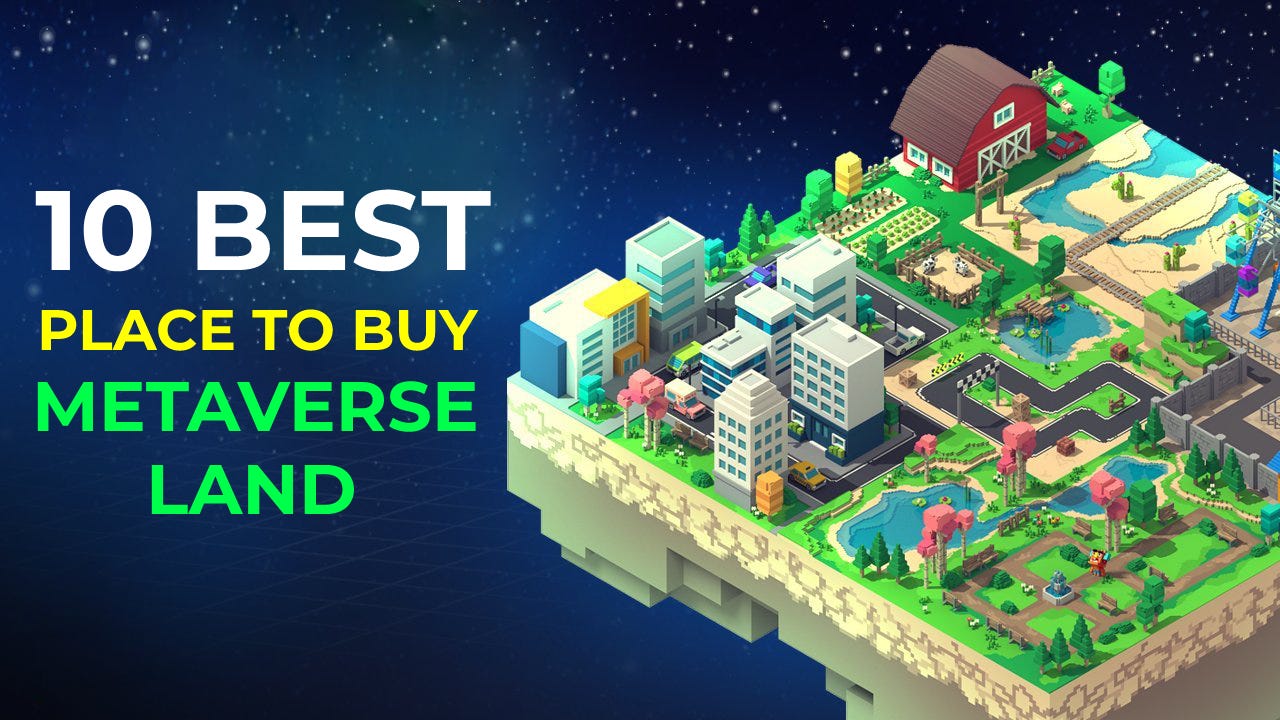
 Williammarkerzz
Williammarkerzz
in
Geek Culture
Top 10 Best Place to Buy Metaverse Land in 2023
Metaverse is a virtual dynasty that exists in a computer-generated environment. It is an idea that has been around for decades, but with…
4 min read
·
Feb 3, 2023
 Eric Lippincott
Eric Lippincott
in
Product Coalition
Utility Eats Value for Breakfast: About Diminishing Marginal Utility
Let’s look at the distinctions between a utility and a novelty, and why the utility always wins the race for value in the hearts and minds…
10 min read
·
Dec 26, 2023
4
 Michael H. Goitein
Michael H. Goitein
in
Product Coalition
Achieve Strategic Clarity: 5 Mindset Shifts for Product Managers
What it takes to 10x your strategy game as a PM
·
8 min read
·
Dec 26, 2023
3
 Williammarkerzz
Williammarkerzz
in
Geek Culture
Top 15 Real Estate Tokenization Companies in 2023–2024(Updated)
Explore the cutting-edge world of Real Estate Tokenization through the lens of the Top 15 companies in 2023–2024
7 min read
·
Jul 19, 2022
1
See all from Product Coalition
Recommended from Medium
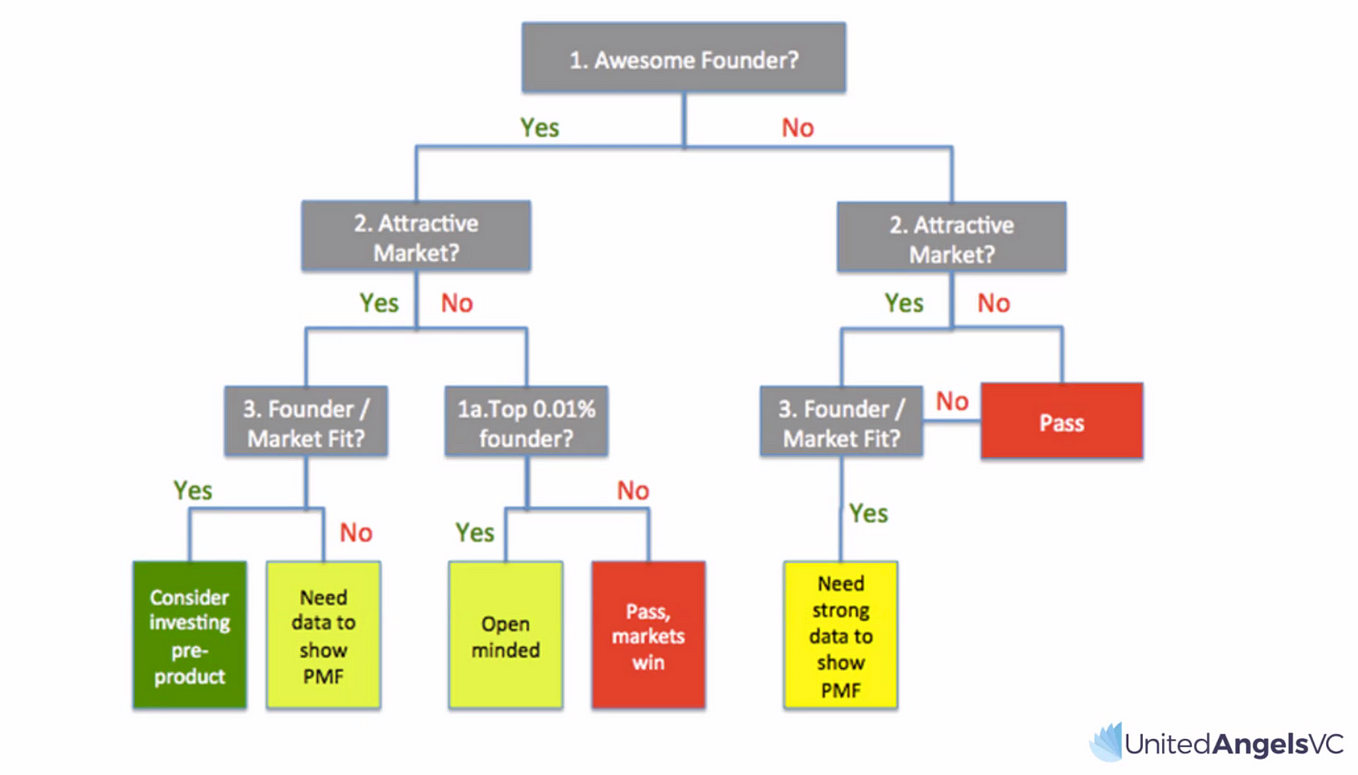
 Farokh Shahabi
Farokh Shahabi
in
Entrepreneur's Handbook
Startup Fundraising Playbook for 2024
0 to 100 of fundraising for startups from early stages to series A.
19 min read
·
Jan 3
13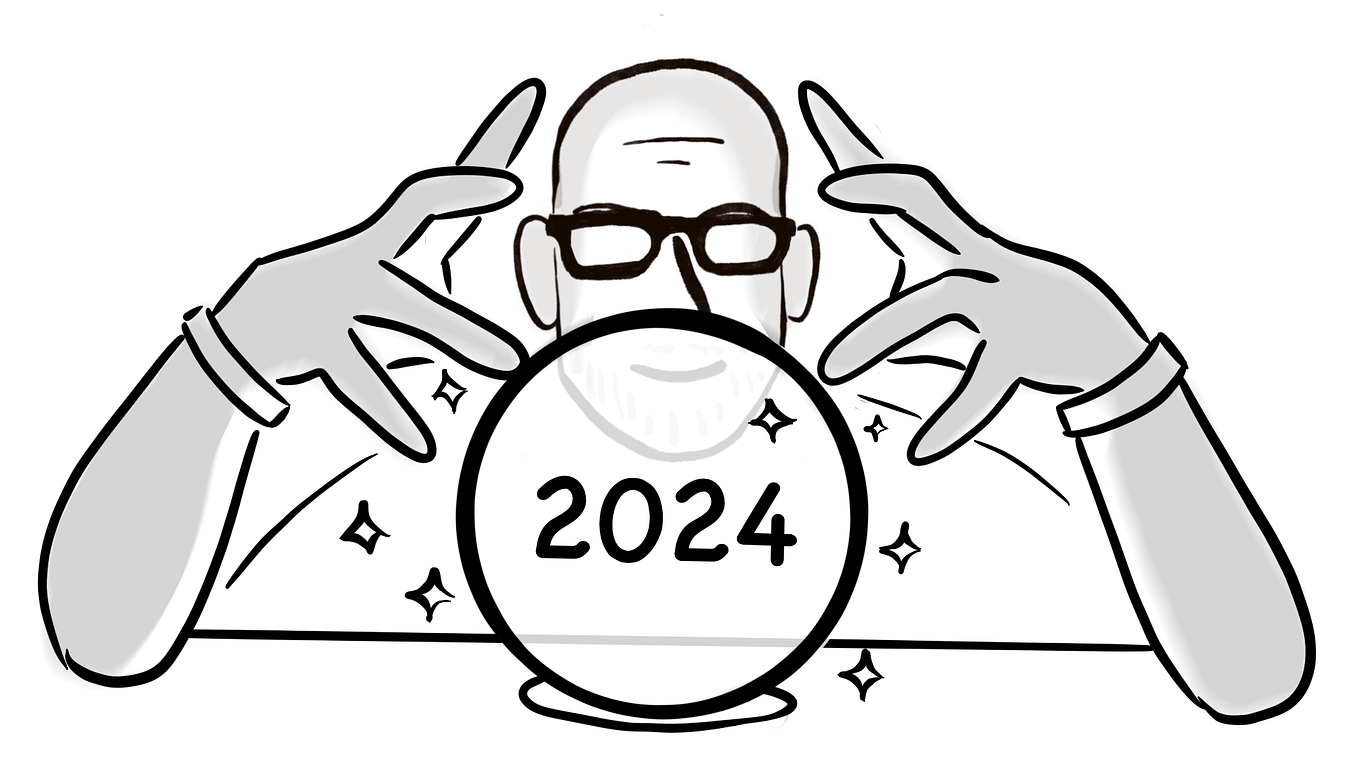
 Scott Galloway
Scott Galloway
2024 Predictions
Each year, we review/make predictions re the past/coming year. Most years, we hit more than we miss. But we do miss — if we made 10…
11 min read
·
Jan 6
89
Lists

 Modern Marketing52 stories
Modern Marketing52 stories
·
363
saves
 My Kind Of Medium (All-Time Faves)58 stories
My Kind Of Medium (All-Time Faves)58 stories
·
179
saves
 Generative AI Recommended Reading52 stories
Generative AI Recommended Reading52 stories
·
610
saves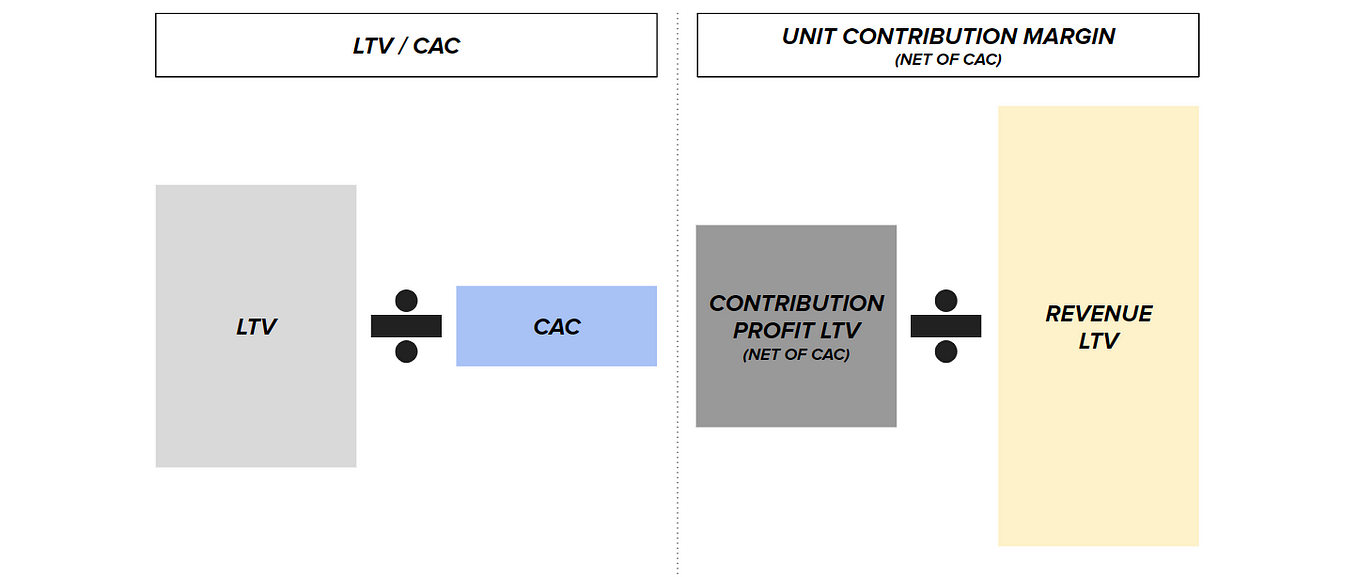
 Parsa Saljoughian
Parsa Saljoughian
in
parsa.vc
Why LTV / CAC Can Be Deceptive — There’s a Better Metric
In this post I discuss why LTV / CAC can be a deceptive on its own and why unit contribution margin is also important to consider.
7 min read
·
Jan 4
480
6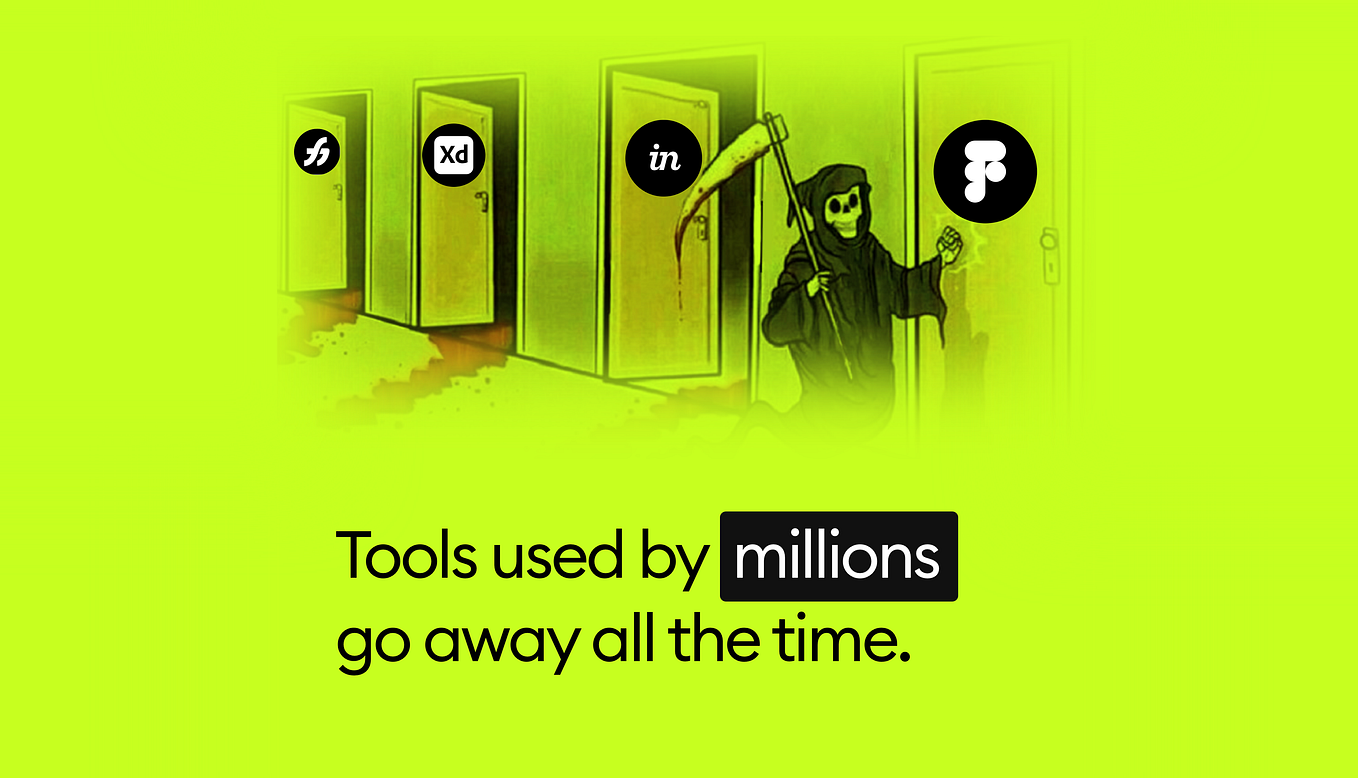
 Michal Malewicz
Michal Malewicz
Figma is not forever.
And inVision is now gone.
·
4 min read
·
Jan 6
836
20
 Mark Vassilevskiy
Mark Vassilevskiy
in
The Startup
How I Build Websites for Just $58 and Sell Them for $1200+
The 2 Simple Services I Use to Acquire Clients For My Agency
·
5 min read
·
Dec 30, 2023
248
 Rosie Hoggmascall
Rosie Hoggmascall
in
UX Collective
Spotify Wrapped: a UX review
They went big in 2023. Did it work?
·
8 min read
·
Jan 3
750
10





![[ℕ𝕖𝕧𝕖𝕣] 𝕊𝕖𝕝𝕝 𝕐𝕠𝕦𝕣 𝔹𝕚𝕥𝕔𝕠𝕚𝕟 - WEN ALT Season?](https://cdn.bulbapp.io/frontend/images/5e881bda-7f7a-42c8-9a03-01263004c332/1)

























